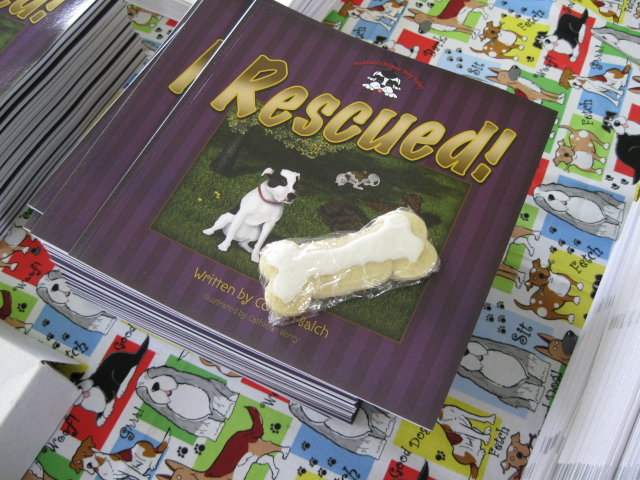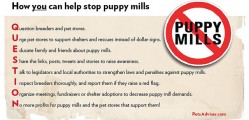When you decide to become a dog owner it is really important that you strive to provide them with the happiest and healthiest lifestyle. Before owning a dog you should really think about if you can provide properly for one, including vet visits and any other costs that will be involved.
Here are 10 ways to prepare and provide a healthy and happy lifestyle for your new pet:
1 & 2. Provide adequate shelter and clean, dry bedding. Whether your dog lives inside your house or outside in the yard, he should have his own little spot that is his alone. If he sleeps inside, provide a dog crate lined with a blanket, towel or dog pillow and carefully choose something you can easily remove and wash. Dogs love dens and a crate gives them a sense of security. If you don’t want to use a crate, try allowing the dog to select his own sleeping area, as long as it is not inconvenient for you. Most likely, he will crawl under a desk, table or even your bed. It is acceptable to allow your dog to sleep in your bedroom but he should sleep on his own bedding and not in your bed. By being allowed to select his own special sleeping spot, your dog will be more inclined to sleep in the same place each night and not be up roaming around, bothering you.
If your dog lives outside all or most of the time, provide a small house big enough for the dog to turn around inside and stretch out. The shelter should be made with waterproof materials, sturdy enough to keep out wind and rain and positioned to provide shade. There are many commercial doghouses available or you can build one out of plywood that will meet these requirements. Design choices are endless, but it is my experience that dogs love a rectangular, flat-topped house. They love to jump up on their house and look around. This configuration also makes them stable. The house may be lined with a blanket or straw. The blanket should be removed and washed from time to time and straw replaced if it gets wet or added to when it breaks down. My dogs love straw! They get as excited when I hand out fresh straw as when I show up with hamburgers on their birthdays, and that’s pretty excited.
3. Supply clean, fresh water. The most important and cheapest nutrient you can give your dog is water. Provide a bowl short enough for her to drink from easily. Stainless steel bowls that are wide, flat on the bottom and have a fairly straight wall are a good choice because they will not break, are easy to clean and difficult to turn over. It is important for your dog to drink enough water every day so keep a bowl of water in a place where it will not be in anyone’s way and the dog can drink undisturbed. Change the water at least daily.
Check for adequate hydration by examining the dog’s skin and gums. Place your hand over her ribs and press gently. Move your hand back and forth slightly. The skin should be loose and move easily with your hand. Another method is to gently lift the skin over the dog’s back. When you let go, the skin should instantly return to its normal position. If it moves back into place slowly, the dog is dehydrated. Gums should be moist.When you are refreshing the water supply, pay attention to how much water has been consumed every day. Significant increase or decrease in intake can signify health problems that may require a visit to the vet. However, water intake of a nursing female will increase significantly.
4. Feed a high quality pet food. By process of elimination, I ended up feeding Purina Pro-Plan Dog Food and my dogs have been thriving on it for several years. Their coats are thick, plush and soft, they have an excellent attitude, love to run and play, live to an average age of fifteen and, perhaps best of all, they simply seem content. Today my dogs eat Pro-Plan Beef and Rice or Pro-Plan Lamb and Rice Performance Formula. As they age, their diet will change and they will go to Senior Pro Plan. The great thing about Pro Plan is that there is a formula for every stage of life from puppy to senior. There are even formula for dogs that have food allergies or weight gain problems. When AKC (American Kennel Club) annually rates the all-breed champions, it is a fact that 6 out of 10 of these dogs eat Pro Plan dog food.
Their diet consists of nothing but dog food and water, with one notable exception. When any dog or I have a birthday, we all get hamburgers.
5. Maintain proper body weight. Just like humans, being overweight is not healthy for your dog. Obesity leads to heart disease, skeletal problems, diabetes and low energy. Your dog will look and feel better if you maintain him at a proper weight. Almost every obese dog is overweight because he is fed too much food and gets too little exercise.
To determine if you dog’s weight is right, look at his body outline from the top and from the side. Looking down on your dog, he should have a waist. From the side, his belly should be tucked up and the outline of his ribs apparent but not highly visible. If the ribs are highly visible, your dog is under weight. To reduce your dog’s weight, reduce his food intake by 10% and feed that amount for about two weeks. If after two weeks he is still overweight, reduce the amount by 10% again. Repeat this until your dog is at an optimum weight. While dieting, increase the amount of exercise he gets very slowly. Remember he has a lot to carry around and may be out of shape. Once he has reached optimum weight and becomes more physically fit, you may have to begin increasing his food intake.
6. Exercise your dog regularly. Exercise is part of a healthy lifestyle for dogs and people. The best and easiest exercise is walking or running with your dog. All you need is some time and a leash. How far and how fast you go with your dog depends on its age, level of fitness and breed. If your dog is out of shape, start slow and build up. When I first start training my dog team in the fall, our first run is no more than ¼ mile. The next day 3/8 of a mile, then ½, ¾, 1, 2, 3, 4, 5. When a dog is fit enough to comfortably run five miles, something almost magical happens and the mileage can increase rapidly. By the end of the first month, we are up to 25 miles a day. Of course, a dog does not have to go that far to be fit, and the size and age of your dog, the time you have to devoted to exercise, and weather conditions will affect how far you want to go each day.
You can easily tell if your dog is getting the right amount of exercise by noting what the dog does when you are finished. If the dog falls over and sleeps for the rest of the day, you probably over did it. If she runs up to you with her favorite ball and wants to play fetch, well maybe you should throw the ball until she uses up some more energy. If she wants to rest and take a short nap, you’ve found the right amount of exercise for your dog.
7. Play with your dog daily. Dogs are pack animals and so have the potential to be able to deal with a variety of circumstances. Properly socialized, he can happily be in the company of many people or other dogs and is also able to tolerate periods of solitude. Too much of either situation is hard on him. Dogs were never meant to spend their entire lives alone in the backyard or anywhere else. Like people, they need companionship to thrive. They need to feel they are welcome and useful members of their pack. And they need to play.If his greeting is a bit too enthusiastic, it will prove useful to both of you if you greet your dog quietly, stroke his chest and shoulders and speak softly when you first enter. If necessary, hold him by the collar at arm’s length. When he tries to jump up, stop petting him and say quietly and sternly, “No”. When he stops jumping up, begin petting him again. He will soon learn that calm greetings get him what he really wants, which is to be close to you, feel your welcome touch and hear your soft, loving voice. If you meet your dog’s emotional need for companionship and play, your dog will feel happy and secure. Discipline problems will be fewer and training easier.
8. Take your dog to the vet at least once a year. One of the most important people in the life of your dog will be his veterinarian. So, before you get a dog, get a vet.
During your dog’s first visit, you and your dog should feel comfortable with the vet. Your dog deserves to be treated with patience, compassion, and genuine concern. And you deserve the same treatment as well. Once he learns to feel comfortable at the vet clinic, he will come to understand that no matter what happens there is nothing to be afraid of. When he is sick or injured, he will come to understand that you are trying to help him by going to the vet.
9. Keep you dog under your control at all times. It is critical to keep your dog under your control at all times for her safety and the safety of others. Control at all times means twenty-four hours a day. You can control by voice, leash, or confinement. When you’re at home or walking at the dog-park where you can let her off of her leash, voice control is appropriate. The most important command you can teach your dog is come. It’s not terribly hard to train your dog to come. Choose a place and time where she will have no distractions and have a nice supply of treats in your pocket. Take a treat out and hold in your left hand. Face her, hold your right arm out at full length straight in front of you with your palm facing the dog like a traffic cop. Tell her to stay and slowly back away three or four steps. Lower your arm, bend forward in a play-bow with your knees slightly bent and your hands on your knees, clap your hands and say come, come.
Now hold the treat out where she can see it and repeat the command come. The dog will come to get the treat. Praise her by saying good dog when she arrives at your feet. Keep repeating this but each time try to move another step away before you say come. Keep the lessons under ten minutes. Eventually she will come because you told her to and you can give her a treat every second or third time, but always praise her. You can also walk away from her and call her to come. Dogs love to chase and she will follow you, quickly learning to come when called.
10. Give your dog a purpose. Dogs are pack animals and your family is her pack. Just as each human family member needs a specific task to perform within the group, so should your dog. By performing her task within the pack you are giving your dog a feeling of security, that she belongs and has a purpose. No one, including your dog, likes to hang around all day and do nothing. Bored dogs can become a nuisance and bark a lot or get into trouble around the house. It is up to you to evaluate your dog and give her something reasonable to do based on her size, aptitude, motivation and personality.
If you are not willing to put this much effort into owning a dog maybe you should think about getting some fish or another pet that requires less dedication. If you agree with all of the advice above then it looks like you’re ready to adopt your first fur baby!
Image Source: Schoharie Library on Flickr





Leave a Reply